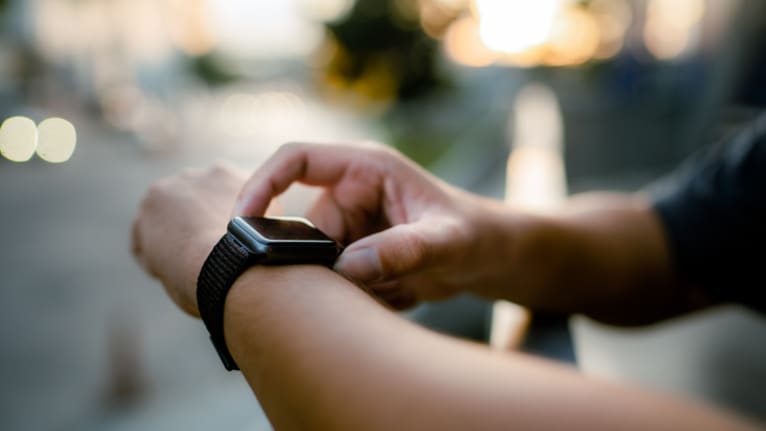

?In 2017, a River Falls, Wis., company—Three Square Market, a maker of self-service vending machines—offered to implant radio-frequency chips in its employees that would allow them to make purchases in their break room micro market, open doors, login to computers, and use the copy machine. It was a very controversial move and received a great deal of media attention at the time.
Fast forward to 2023. The issue isn’t dead, but it’s no less controversial, with Alabama recently moving to make it a felony for any employer in the state to require employees to be microchipped.
While implantable devices have yet to take hold outside of the pet community, a less invasive use of biometric devices is on the rise, primarily to support health and wellness. Other applications are also emerging.
Biometrics and Wellness
Three Square Market was arguably trying to get attention back in 2017 when it made the news for planning to microchip its employees. And while the idea hasn’t yet taken off, the use of nonimplanted but wearable devices has, particularly for health and wellness applications.
In March 2023, Global X Research surveyed 1,032 people in the U.S. about their openness to, and reservations about, digital health and wearables. More than 50 percent indicated that they perceived real-time monitoring and convenience as positive attributes of the technology—almost 50 percent felt that digital health care offered more coordinated care and ease of access, especially in underserved areas. Nearly 90 percent of respondents viewed FDA-approved wearable devices as at least moderately accurate.
That level of interest bodes well for organizations using or considering the use of wearables or biometrics in the workplace to help employees manage and improve various aspects of their health and wellbeing.
Interest Growing Among General Public and Employees
Chelsea Ashbrook is senior manager of corporate digital experience at biotech company Genentech and the founder of TheFlexibleWorkers.com. “These fantastic devices are more than simply fashionable accents,” she said. Biometric devices, she noted, can help employees “monitor their physical and mental health, set objectives, and assess their progress toward achieving optimal health.”
From an employer’s point of view, the use of biometric devices can help engage employees while also potentially boosting their health, which can minimize absenteeism and health care costs.
“Companies are using biometric screenings to cut their health care costs and identify positive, and negative, health trends across their employee base,” said Betsy Nota-Kirby, vice president of national health management consulting at Marsh McLennan Agency, the U.S.-based small- and mid-size business arm of global brokerage Marsh. “Biometric tools, such as smartwatches, aim to alert a person to any possible health risks. They also provide an easy way to keep track of changes in vital statistics from year to year.” It’s reasonable to assume, she added, that if employees are more aware of health risks, then they’re more likely to follow up with their primary care providers.
Beyond Health and Wellness: Biometrics for Other Purposes
There are other applications for biometrics in work environments—not all with as much employee support as wellness trackers. For instance:
- Employee identification.
- Time and attendance tracking.
- Access control—through fingerprints or eye scans.
- Security and identity management, a growth area since the pandemic resulted in many employees working from home.
Gartner reported that “the number of large employers using tools to track their workers has doubled since the beginning of the pandemic to 60 percent, with this number expected to rise to 70 percent within the next three years.”
There is some evidence to suggest that these types of uses are becoming more acceptable—although organizations have a way to go to effectively get all employees on board.
According to the Nov. 2022 Face of the Future Report, conducted by YouGov, an accredited research organization, and commissioned by CyberLink, a global tech company:
- 39 percent of Americans said they are open to facial recognition for improved safety at the office.
- 33 percent said they’re open to it for improved convenience at the office.
- 15 percent of people aged 18-34 currently use facial recognition for access control at work, or clocking in and out, compared to 9 percent and 3 percent, respectively for those aged 35-54 and 55 or older.
- 176 million Americans use facial recognition daily.
Selling employees on the use of this type of technology will require a focus on issues related to both personal privacy and how any data collected will be used. Some best practices gleaned from the adoption of wellness and fitness trackers may help.
Best Practices to Minimize Angst Around Adoption
The use of biometric devices to track employee activity beyond health and wellness-related uses has received mixed reviews, with employees often balking at being monitored, especially while at home. However employers are using the technology, it’s important to be transparent and upfront about how they are—and how they will not—use data gathered from wearable devices.
Employers should consider:
- Employee comfort. Take the time to ensure employees clearly understand how the technology works, what it does, and how it will impact them.
- Consider data privacy and security. These are top of mind issues for employees and need to be addressed. Be open and honest. In some cases, you will be collecting data on employee behaviors. Make sure they’re aware of that and of how exactly that data will be used.
- Provide ongoing education and support. Keep the lines of communication open. Consider identifying a point, or points, of contact to respond to questions and concerns employees may have. Ensure supervisors and managers are armed with information to help them manage any questions or concerns they may receive.
- Continuously evaluate the effectiveness of the technology you’re using, how it’s being used, and what your data may tell you about usage among employees, and make adjustments as necessary based on employee feedback and lessons learned.
Ultimately, regardless of how the technology is put into practice, open, honest, and frequent communication is critical. Employees need to understand the why behind the use and the benefits they will realize. Employers should be ready to answer when employees ask “What’s in it for me?,” and explain why they are behind requiring or requesting employee participation.
Lin Grensing-Pophal is a freelance writer in Chippewa Falls, Wis.

